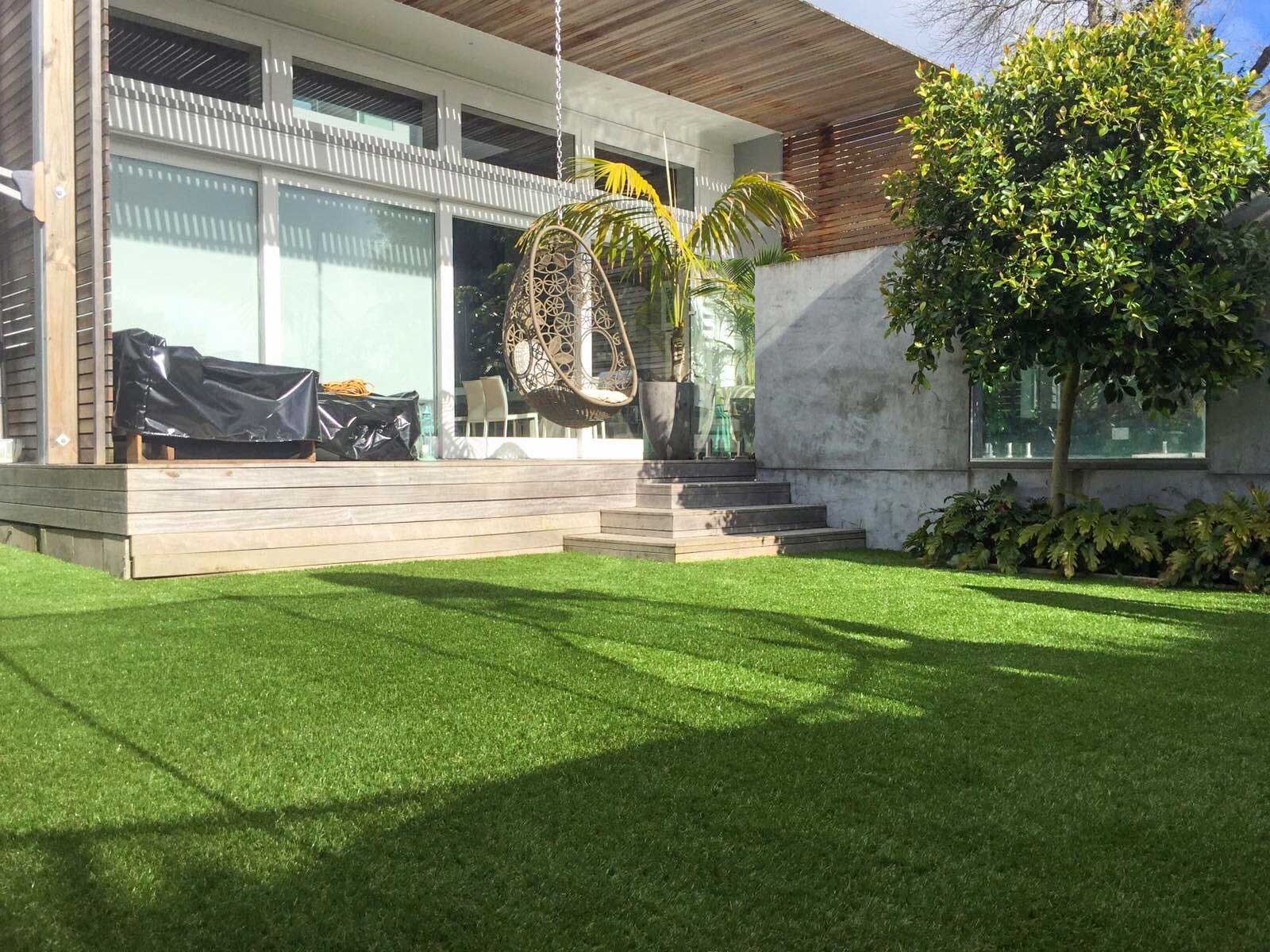How do you join two pieces of artificial grass together? We've all seen bad artificial…
Artificial turf preparation: How to join artificial grass seams together
DIY Artificial turf installation step four: How do I join the rolls of grass together
The first thing to consider when installing a new synthetic turf surface in your backyard is where will you spend the majority of your time looking at the turf? Do you look at the lawn from your kitchen, lounge, outside deck/paved area or as you drive in or out of your driveway? The important thing to remember is the artificial grass nap (also called grain) should always be facing towards you where possible – this gives you the deepest colour and the least shine/gloss from the artificial turf surface.
Once you’ve decided the best direction for laying the turf, you need to calculate the actual number of metres of turf you require. All our landscaping surfaces come in 3.66m (12ft) wide rolls and 20m in length. Artificial grass rolls can be cut down in length to suit your layout but the width of the synthetic grass roll is always 3.66m wide and can lead to large amounts of wastage depending on the shape of your areas. Any triangular or circular shapes will always generate more wastage than a square or rectangular area, circular areas can have up to 25% wastage in some cases.
It’s important to draw a small plan of your area to help you layout the turf rolls and minimise wastage by using offcuts in smaller areas where possible. Note, the turf always needs to be laid in the same direction even if different areas are separated by a path or garden. Artificial turf laid in alternate directions will look different depending on the direction of the sun throughout the day.
Once you’ve decided on the direction of the rolls the turf is laid out and left to relax in the sun for at least two hours. The turf is rolled up under tension in the manufacturing plant and needs some time to relax before it can be glued together. The outside selvage (side section of the roll with no yarn/tufts) is trimmed off with a sharp knife and the rolls are butted hard up against each other with no more than a 5mm gap separating them.
Once the rolls of artificial lawn turf are in place, the edge of the rolls are pulled back approximately 200mm each (400mm wide gap between the rolls) to allow the laying of a 300mm joining tape down the middle of the seam. An outdoor artificial grass adhesive is then applied to the joining tape using a ‘v’ or square notched trowel, once the adhesive is ready the artificial turf is folded back into place. The outside 150mm of each turf roll is now sitting with the back of the turf in the adhesive, we then use a turf rolling tool on top of the grass to push it into the adhesive ensuring the back of the turf has a consistent coverage of adhesive bonding it to the joining tape.
The final process laying process before sanding your artificial turf is to trim the outside of the area with a sharp knife and secure the edges of the turf to timber (with glue or nails) or use landscaping pins every 300mm around the perimeter.


